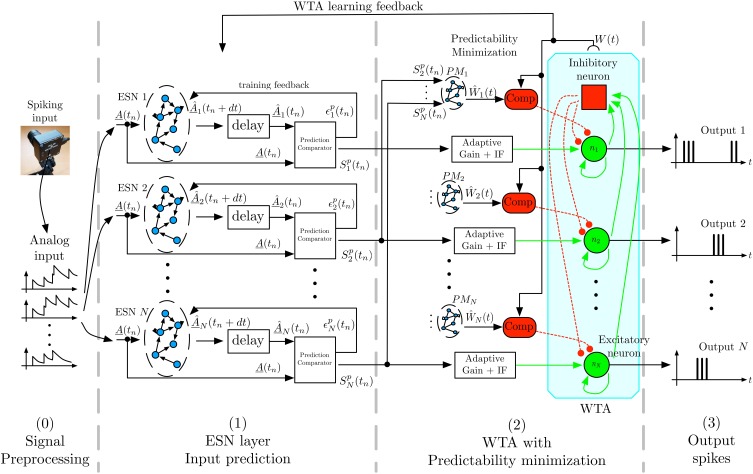Figure 2.
Architecture for unsupervised spatiotemporal feature extraction. Spikes from the DVS are transformed by filtering into analog input signals that are sent to a set of ESN networks. Each ESN is trained to predict future input activations based on current and past activities. The prediction is compared to the actual inputs, and the output signal Spk, which is a representation of the ESN's prediction performance is fed into a Winner-Take-All (WTA) network. This WTA selects the best predicting ESN and enables it to train on the present input sequence. A predictability minimization process promotes orthogonality of predictions between the different ESNs during the WTA selection. The combination of temporal prediction and competition through the WTA allows each ESN to specialize on the prediction of a distinct dynamical feature, which thus leads to learning of a set of different feature detectors.

